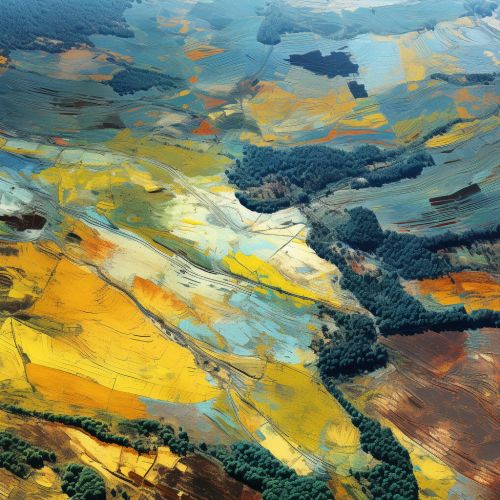The Science of Synthetic Aperture Radar in Earth Observation
Introduction
Synthetic Aperture Radar (SAR) is a type of radar imaging system that is extensively used in Earth observation. Unlike traditional radar systems, SAR uses the motion of the radar antenna over a target region to provide finer spatial resolution than conventional beam-scanning radars. SAR is primarily used to generate two-dimensional (2D) images or three-dimensional (3D) reconstructions of landscapes, and has been employed in a variety of disciplines, including geology, archaeology, and environmental science.


Principles of Synthetic Aperture Radar
SAR operates on the principle of radar imaging, which involves the transmission of radio waves towards a target and then recording the reflected signals. The unique aspect of SAR is that it creates a "synthetic" aperture by moving the radar antenna along a given path, thus simulating a much larger antenna or aperture. This results in high-resolution images that are independent of the actual physical size of the antenna.
The SAR system works by transmitting a burst of radio waves towards the Earth's surface from a moving platform such as a satellite or aircraft. The radar then listens for the echo of these waves as they bounce back from the ground. By measuring the time it takes for the echo to return, the system can calculate the distance to the point on the ground that reflected the wave, thereby creating a map of the Earth's surface.
Applications of Synthetic Aperture Radar in Earth Observation
SAR has a wide range of applications in Earth observation due to its ability to provide high-resolution images regardless of weather conditions or time of day. This is because the radio waves used by SAR can penetrate clouds and are not affected by darkness, unlike optical imaging systems.
Geology and Geomorphology
In geology and geomorphology, SAR is used to study the Earth's surface and subsurface. It can detect changes in the landscape over time, such as the movement of glaciers, landslides, or changes in vegetation cover. It can also be used to map the topography of an area, even under dense vegetation or in cloudy conditions where optical sensors would be ineffective.
Environmental Monitoring
SAR is also used in environmental monitoring, where it can provide valuable data on various environmental parameters. For instance, it can be used to monitor deforestation, desertification, and changes in land use. It can also provide information on soil moisture content, biomass, and other parameters that are important for agricultural and forestry applications.
Disaster Management
In disaster management, SAR can provide critical information in the aftermath of natural disasters such as earthquakes, floods, or landslides. It can help in assessing the extent of damage, identifying affected areas, and planning rescue and recovery operations.
Advantages and Limitations of Synthetic Aperture Radar
While SAR offers several advantages over other imaging systems, it also has certain limitations that need to be considered.
Advantages
One of the main advantages of SAR is its ability to operate in all weather conditions and at any time of day. This makes it a valuable tool for continuous monitoring of the Earth's surface. Additionally, the high resolution of SAR images allows for detailed analysis of small features on the Earth's surface.
Limitations
Despite its advantages, SAR also has certain limitations. One of the main limitations is the complexity of SAR data, which requires sophisticated processing techniques to generate usable images. Additionally, the interpretation of SAR images can be challenging due to the unique characteristics of radar imaging, such as speckle noise and the effects of radar shadow and layover.
Conclusion
Synthetic Aperture Radar is a powerful tool for Earth observation, providing high-resolution images of the Earth's surface regardless of weather conditions or time of day. Its applications range from geology and environmental monitoring to disaster management, making it a valuable resource in our understanding and management of the Earth's resources and environment.
